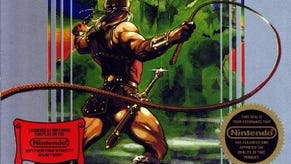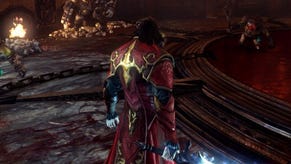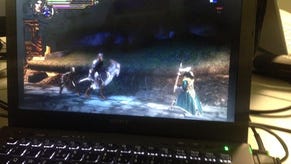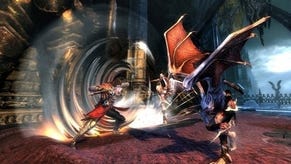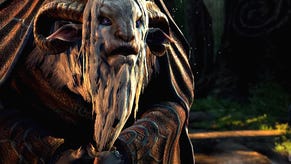Face-Off: Castlevania: Lords of Shadow
Platform parity?
While Lords of Shadow can become noticeably jerky at times on both platforms, there is some pretty impressive motion blur implemented - both object and camera-based. This serves to smooth the scene a touch, but control response can suffer in really taxing situations. In these cases the PS3 version once again retains the performance advantage.
Perhaps the best example of this is to compare the very first scene of the game - it definitely appears to be one of the heaviest in the first few chapters, and it's here that the PS3 version seems to have a small edge in terms of frame-rate and controller response. The latter can be quite a big deal when dealing with the timing on the QTEs - it's annoying when you fail them due to insufficient visual feedback from the game. While relatively rare, in cases like this every frame counts.
While there is a performance difference between the two games, for the most part they look and play the same. The biggest difference between the two versions is that Mercury Steam couldn't cram Castlevania onto a single Xbox 360 DVD, and without the masses of storage space available that it has on the PS3 Blu-ray, it spread the game across two discs instead.
The question is why? Is there really two discs' worth of game here? To get some answers we took a look at the disc structure of the PS3 version, and found out some pretty interesting information - actual game data accounts for 4.12GB, while there's a big folder called "movies", weighing in at 7.5GB. That's the real reason why the 360 game is spread over two discs: there's a whopper amount of pre-rendered cinematics here and ironically many of them are based on in-game engine visuals.
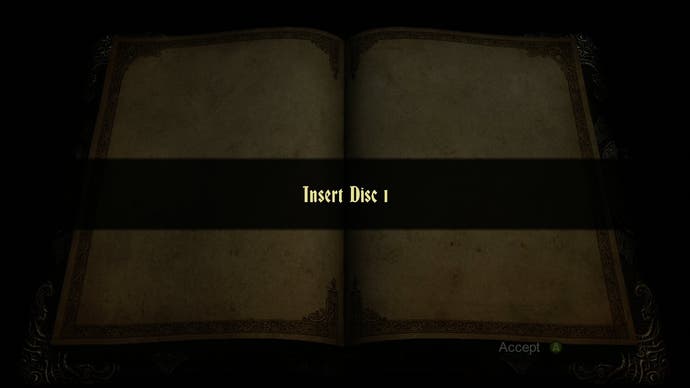
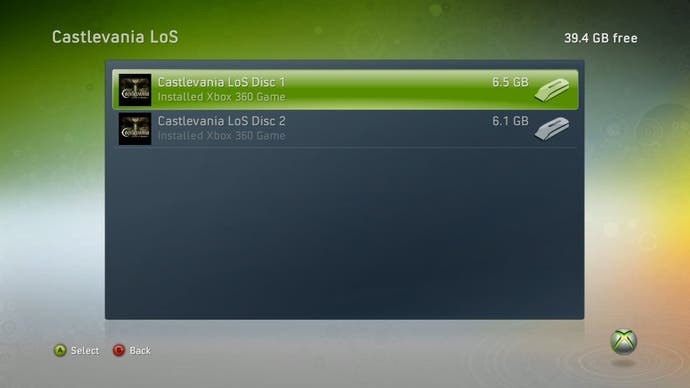
Now, the good news is that Mercury Steam's strict adherence to platform parity is such that the exact same movie encodes are used on the Xbox 360 version of the game - indeed, they're byte-for-byte identical to the files found on the PS3 Blu-ray, meaning completely identical image quality on the pre-rendered cut-scenes. Neither the developer nor the publisher compromised the product in bringing it to Xbox 360.
The bad news is that Bink video compression has been used - the same codec that cheapened the appearance of Final Fantasy XIII on Xbox 360. Back in our FFXIII Endgame feature, we highlighted how more modern compressors can bring about increased visual quality and/or smaller file sizes - obviously something that would be rather handy on the Xbox 360 version of Castlevania.
It's worth pointing out that Castlevania's cut-scenes look really decent - far, far removed from the horrors of FFXIII 360. However, what is equally important is the way that Mercury Steam achieved this. Yes, the encoding is better than Square Enix's, but the game itself has almost exactly 53 minutes of cut-scenes, and a further three minutes or thereabouts of credits and logos. An hour of HD video occupying 7.5GB is a pretty extravagant use of bandwidth compared to what well-encoded h.264 video is capable of these days.
Incidentally, the cut-scenes run at 25FPS - meaning they're slightly jerky if you're not running at PAL standard definition - but the drop in frame-rate does mean that more bandwidth can be utilised on each frame, resulting in higher image quality.
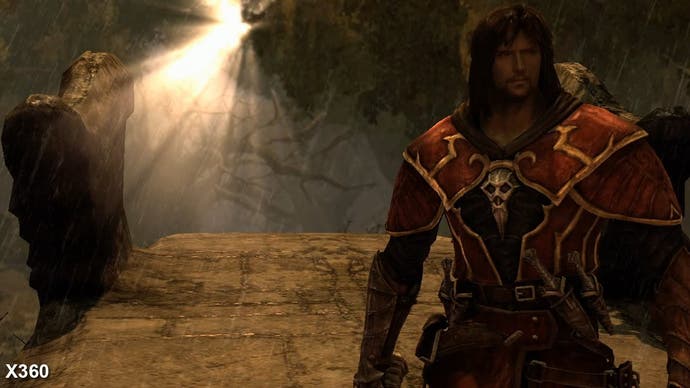
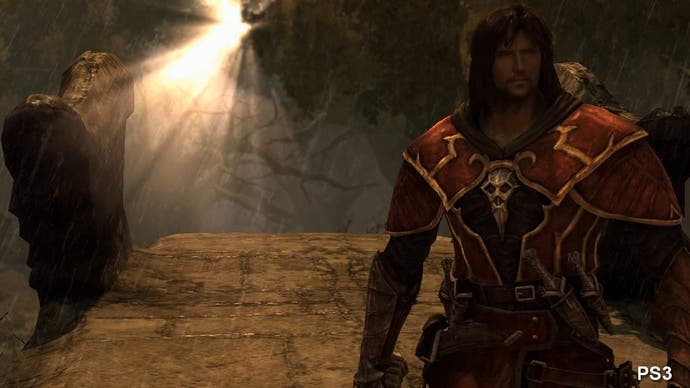
It can't have been an easy decision for Konami in deciding to put the Xbox 360 version of Lords of Shadow onto two DVDs - for starters, the basic cost of manufacture is likely to be very much higher, impacting its profit margin - so the publisher is to be congratulated on not taking the easy route in re-encoding the movies to a smaller size using the existing codec, cramming the vids onto one disc and compromising the appearance of key scenes as a result.
That said, it only serves to highlight that the Bink codec is positively ancient these days and a good couple of generations behind the state of the art. Clearly the industry is crying out for a successor - especially when disc space is at a premium on the 360, a platform that still has several years of life left in it. Those constraints are only likely to become more of an issue as time goes by. Inefficient video codecs are a luxury the platform can't really afford.
In terms of the impact on the gameplay experience, the two-disc setup is a touch intrusive but nothing that is going to overtly affect your enjoyment of Lords of Shadow. The game has 12 chapters in all - five on disc one, seven on disc two - and the change-over point is seamless enough; you swap discs and the game doesn't bother you again. However, part of the game's charm is that the powers you unlock in later sections of the game allow you to access areas of earlier levels, adding a lot to the replay factor. You can even go back whenever you want and continue the main quest at a later date.
Now you might think that having both discs installed to HDD would allow for no swapping at all, but that wasn't the case when we reached chapter six, and it wasn't the case when we immediately went back to the previous level. In both cases the disc needed to be inserted even though we had all the data immediately to hand on the HDD.
Perhaps it's an issue with the review code we had (highly unlikely), but it seems to be that the 360 itself is doing a hardware check before it allows you to access the data. Certainly, once the disk has been inserted the game continues to run from HDD as per normal. It's not exactly a game-breaker but it is a bit strange. Both discs can be booted to run the code, so perhaps Konami didn't want friends going halves on buying the game?
From Digital Foundry's perspective, the original 8/10 score for Lords of Shadow is a fair assessment for both PlayStation 3 and Xbox 360 versions of the game, but having spent a humongous amount of time playing the game for this feature, it's also fair to add that it can be frustrating and annoying. It's obvious the game is somewhat unpolished in areas and could have done with more playtesting. The developers seem to give you advice for dealing with the obvious things, but then leave you high and dry when you can really use the help. Something akin to the hint system in Uncharted 2 would have made a hell of a lot of difference.
It also seems that the developers are intent on performing many cruel and unusual punishments on the player, often taking you around in circles rather than subtly guiding you where to go next, or putting you back at the beginning of a puzzle and making you repeat a range of time-consuming activities to get back to where you were. The select opponents who soak up massive amounts of damage also serve to artificially prolong play and leave you annoyed rather than enjoying what is a pretty solid combat system.
Nevertheless, for console owners with the luxury of choosing between the two SKUs, it's got to be the PlayStation 3 game that gets the nod. Both versions have somewhat variable performance, but on the Sony platform you get a few extra FPS in taxing situations and there is some extra zing to the controls. While the disc-swapping situation on 360 is hardly a massive bother, it's annoying that there is any at all when you have the game fully installed onto HDD, and the fact this is eliminated completely with the extra storage space of the Blu-ray on PS3 can only be a good thing.
Check out our Castlevania: Lords of Shadow review for a detailed gameplay assessment. Lords of Shadow is out for PS3 and Xbox 360 on 8th October.

